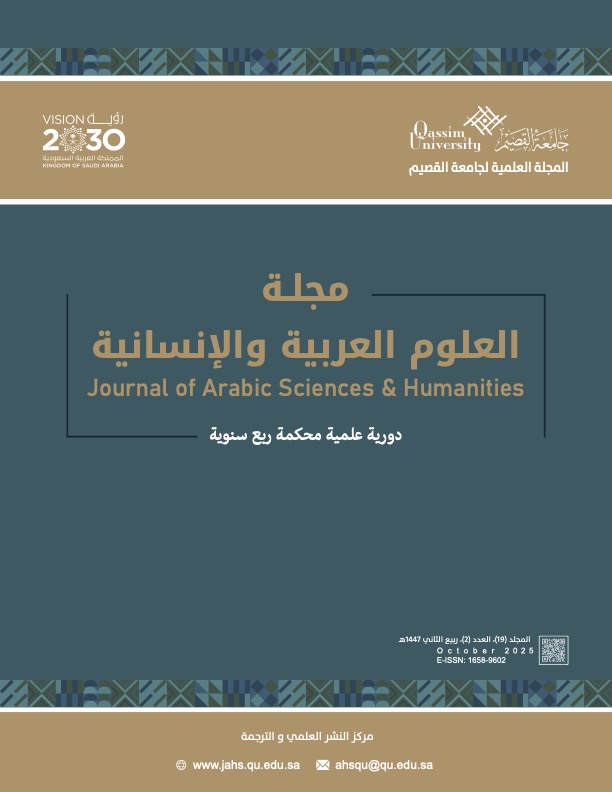Spatial Variation of the Phenomenon of Urban Poverty in the City of Buraidah in 2024
Abstract
This study aimed to identify urban poverty indicators and measurement methods in Buraidah, analyze factors influencing its spread, and examine the social, economic, cultural, and housing characteristics of poor households. It also explored the geographical distribution and spatial variation of the phenomenon. Using a descriptive-analytical approach, data were collected through a questionnaire from 375 households benefiting from social security and analyzed with the Chi-square test. The findings showed that urban poverty is linked to factors such as the death or illness of the household head, divorce, rural-urban migration, low education levels, dependency culture, and economic changes. Significant spatial disparities were found across neighborhoods in terms of household, housing, and service characteristics. The study recommends adopting spatial targeting strategies, raising awareness, establishing a specialized unit to monitor poverty indicators, and enhancing coordination among relevant agencies.
Keywords: Poverty - Urban Poverty – Urban Development – Urban Problems.

This work is licensed under a Creative Commons Attribution-NonCommercial 4.0 International License.


